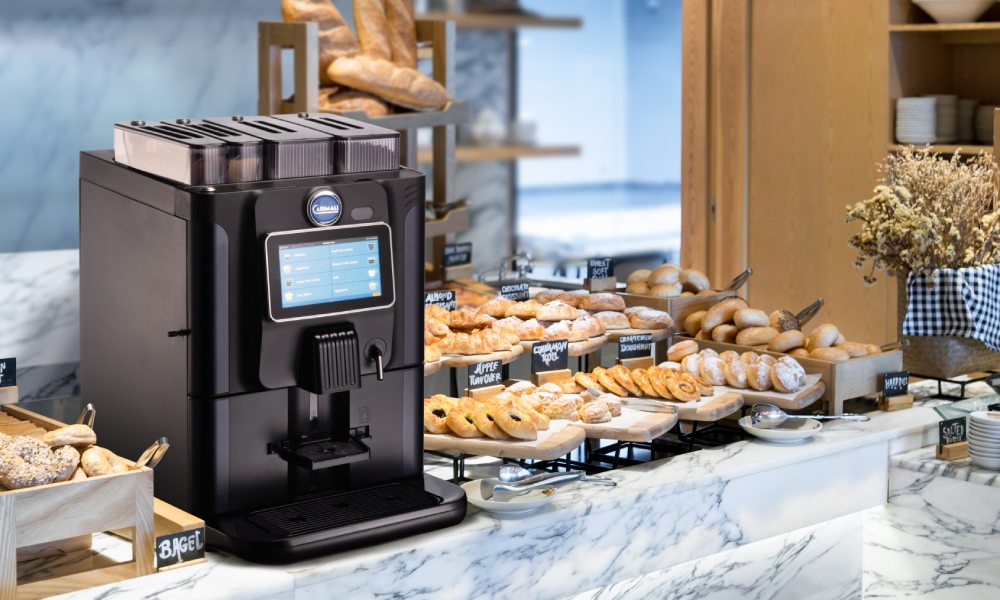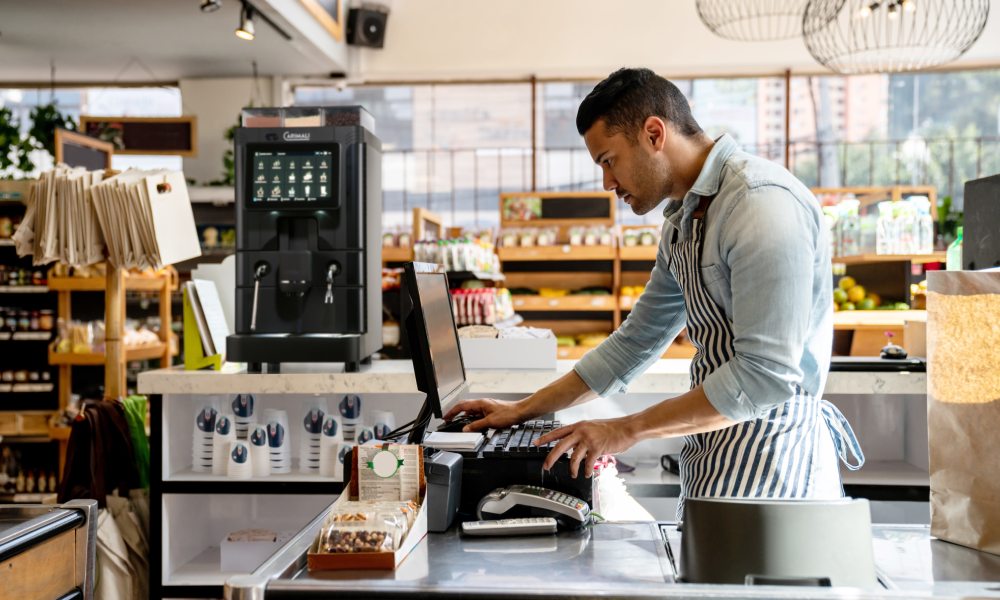What to look for when buying a superautomatic coffee machine
Jenna Gottlieb talks with Camilla Viaro about what to consider when buying a superautomatic coffee machine.
From car dealerships to clothes shops, coffee is entering more consumer spaces than ever before. Businesses are increasingly looking to superautomatic coffee machines for an answer to this evolving demand.
Superautomatic coffee machines emerged in the 1960s, and Carimali was at the forefront of their development. Often referred to as “bean-to-cup machines”, they automate every step of the brewing process: grinding, dosing, and dispensing.
“They are developed to guarantee quality and consistency even when used by a less-experienced operator, without giving up the value of fresh beans and milk quality,” says Camilla Viaro, operational marketing manager for Carimali.
This is a contrast to semi-automatic machines, which gives the user more responsibility over the brewing process and therefore provides more margin for error. Fully automated machines have been developed to take on this responsibility – streamlining the process for those less experienced without sacrificing on quality.
“The main difference between semi-automatic and superautomatic coffee machines is what is required for the user making a beverage,” says Camilla. “In fully automatic machines, once you set all the parameters and fill the machine with coffee beans and milk, you can select and enjoy the drink.
“The machine works autonomously and guarantees a drink in keeping with the preset.”
Superautomatic coffee machines are clearly a good option for certain businesses – but what should you look for when buying one?

Menu customisation
The menu is the operator’s first point of contact with the machine. An interface that is easy to navigate can enhance the user experience and make it more likely for the operator to maximise the machine’s capabilities.
Furthermore, menu options must continue to align with evolving consumer preferences. An increasing number of consumers are branching out from traditional coffee beverages, expecting a range of hot and cold options instead.
Major coffee brands have been observing this in recent years. For example, Dutch Bros Coffee reported that cold beverages made up 84% of their sales mix between Q3 2021 and Q3 2022.
It’s increasingly important for superautomatic coffee machines to reflect this shift and adapt to changing consumer preferences – offering versatility across a range of hot and cold drinks.
Carimali’s SilverAce Plus has a 10″ touchscreen with up to 60 drink selections, giving the user a wide range of choices. The SilverAce Plus and the SilverAce both feature four hoppers for two coffees, two powders, and the capacity to stock fresh milk. As a result, these machines are able to meet the increasingly diverse demands of today’s consumers.
Additionally, Carimali has incorporated telemetry systems into their machines for remote interaction, data collection, and quick intervention in the event of malfunctions. Given that maintenance remains the responsibility of the user, a comprehensive system for this should be in place.
“The CARIcare telemetry system even includes touchless functionality, enabling users to interact with the machine directly from their own devices,” says Camilla. “This helps to create a safer work environment.”
Milk frothing capability
The demand for plant milks continues to soar, with sales growing by 19% between 2020 and 2022, while dairy experienced a decline of 9%. As this trend shows no signs of slowing down, it has become imperative for superautomatic coffee machines to accommodate alternative milk options.
Producing cold-frothed milk is also becoming an essential requirement for superautomatic coffee machines. The cold coffee sector is projected to grow at an annual rate of 22% over the next five years, reaching a total value of $1.35 billion by 2027.
To stay relevant in the future, superautomatic machines must integrate cold milk frothing systems. For example, the SilverAce Plus is equipped with CARIcream, a cutting-edge delivery system that can dispense hot or cold milk.

Size & daily production volume
Size plays a crucial role in locations with limited space, such as gas stations and hotel breakfast bars. Compact superautomatic coffee machines are increasingly sought after to deliver a fully automated experience without occupying excessive counter space.
“We offer smaller machines for locations that may be compact but still provide a wide range of beverage options to satisfy even the most demanding users,” says Camilla. “You’ll find our machines in increasingly different locations, such as coffee shops, hotels, restaurants, offices, and even at home.”
These locations can experience particularly busy periods. Therefore, a machine that can handle high-volume production could be crucial for certain businesses.
With an average daily production of 200 cups, both machines in the SilverAce range are well-equipped to meet the growing expectations of customers who expect coffee in various settings – such as car dealerships, clothes shops, and waiting rooms.
“Automatisation allows wide customisation possibilities and, combining technology and flexibility, can develop easy solutions to answer various market needs,” Camilla says.
Superautomatic coffee machines’ energy usage
Energy usage is a big part of the conversation when selecting a coffee machine. With an increased focus on sustainability, customers are coming to expect businesses to address their impact on the environment. In addition, keeping energy costs down helps to improve profit margins.
Superautomatic machines can offer additional tools to help businesses save money on energy consumption. For instance, Carimali’s MaxSave feature can save the specific energy used by a coffee machine by 25% to 90% by detecting when someone is in close proximity.
There is a limited amount of data available on the precise savings for coffee shops, but Carimali estimates that businesses can save over 30% on their energy costs.
While machines with motion detectors may come with a slightly higher upfront cost, the long-term savings they provide outweigh the initial investment.
Ultimately, there are many factors to consider when purchasing a superautomatic coffee machine. Even with one manufacturer like Carimali, the options on offer are more extensive than ever before. Conducting thorough research is crucial for businesses to find a machine that perfectly aligns with their specific requirements – because the ideal solution is out there, waiting to be discovered.








